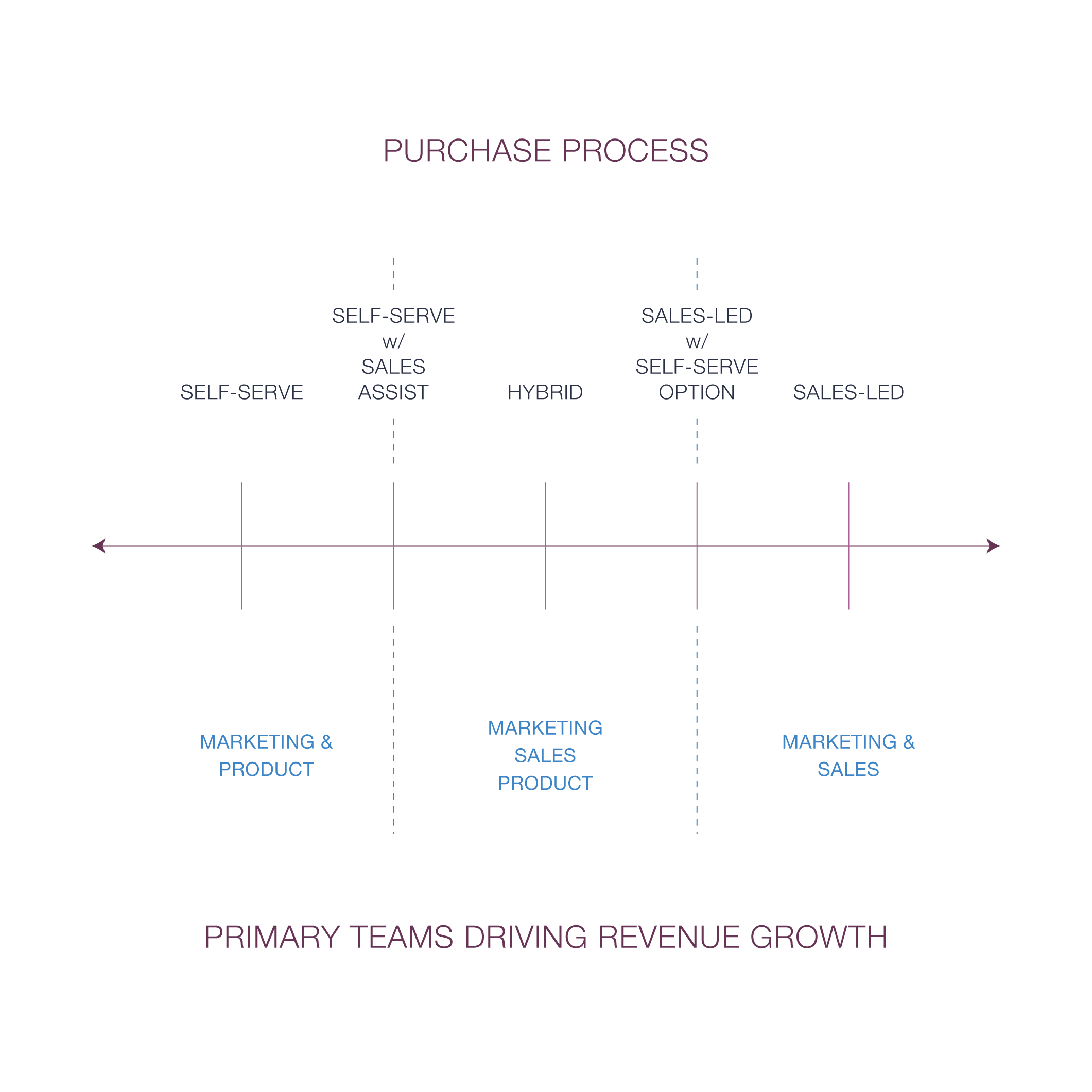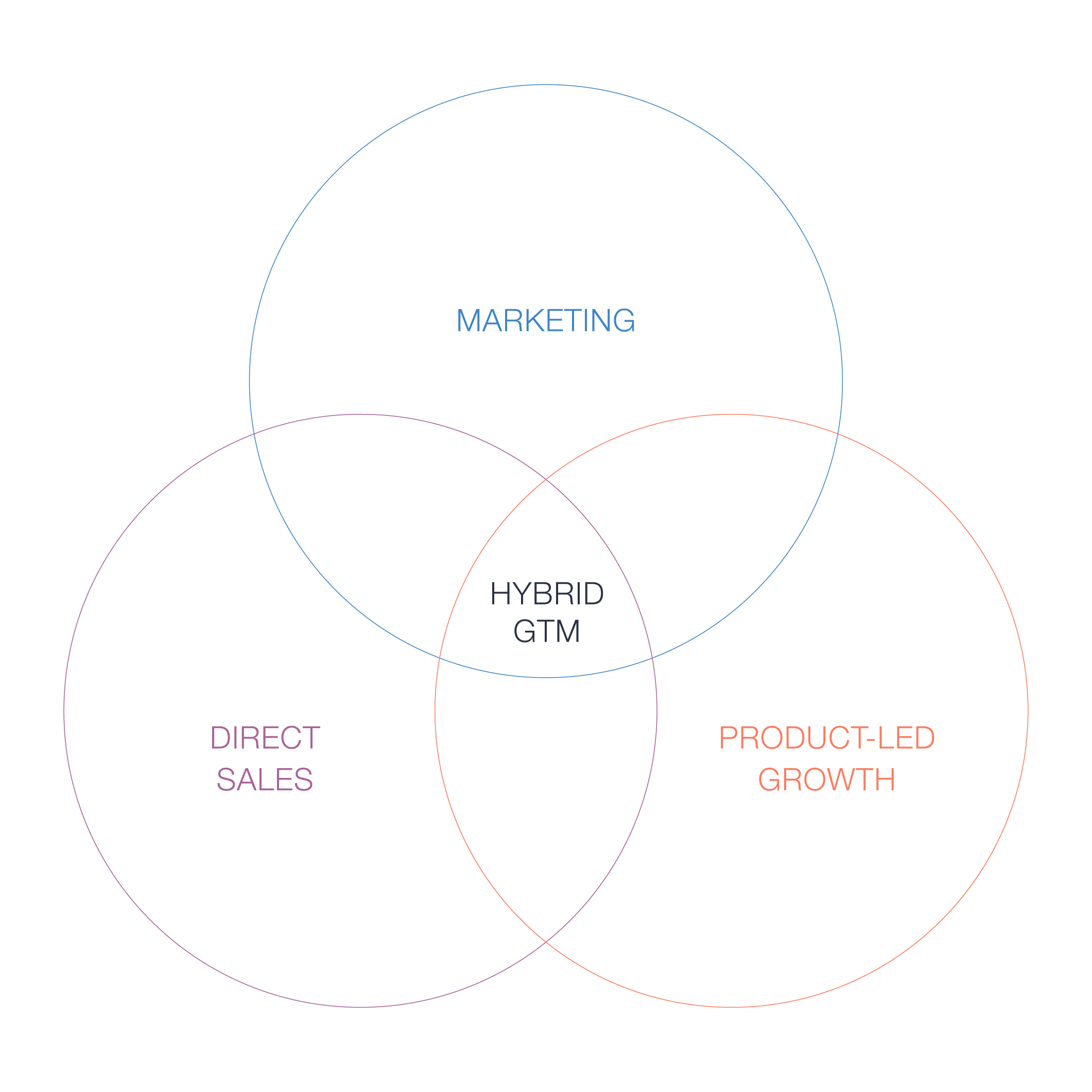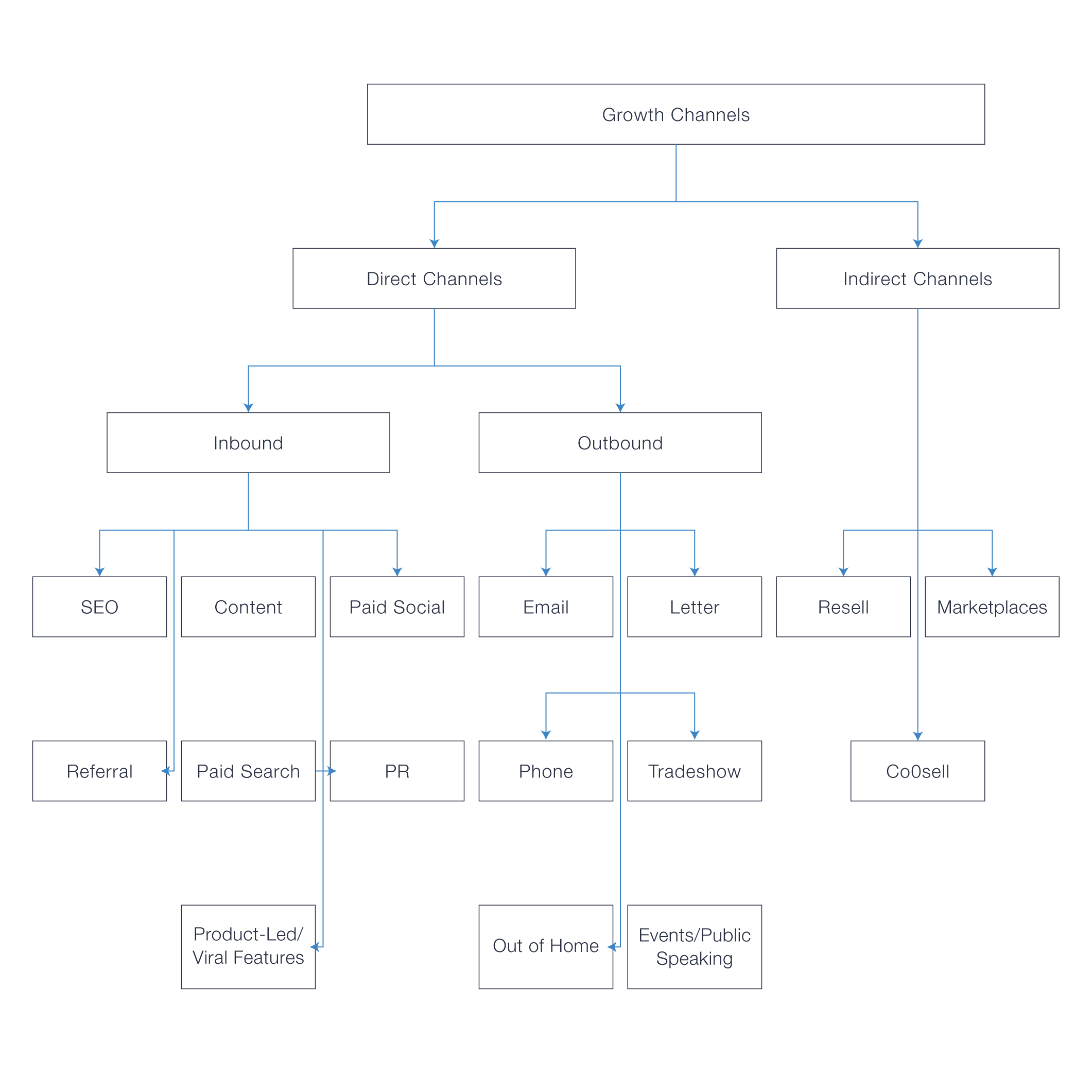Go to market motions are strategies that help businesses engage customers and drive sales.
This guide covers the main types of these strategies—sales-led, marketing hire first, product-led, and community-led. Learn how each can accelerate growth and how to choose the right one for your startup.
Key Takeaways
-
A well-defined go-to-market (GTM) strategy is critical for startups, involving systematic approaches that connect products to customers and drive revenue.
-
The three primary GTM motions—sales-led, product-led growth, and community-led growth—each have unique advantages and should be carefully selected based on factors like target market and product complexity.
-
Continuous evaluation and integration of technology into GTM strategies are essential to adapt to market changes and improve operational efficiency.
Understanding Go to Market Motions

At the heart of every successful business lies a well-defined go-to-market strategy. Understanding GTM motions helps in effectively reaching growth objectives. Revenue teams take coordinated actions through these motions. Their goal is to connect products to customers and generate revenue. They are not just individual strategies but a systematic approach designed to drive customer engagement and facilitate product uptake.
A well-crafted GTM strategy includes various marketing and sales tactics tailored to target specific customer segments. It ensures that the marketing channels the strategy includes and marketing efforts are aligned with business goals, maximizing overall market impact.
GTM motions play a pivotal role in a startup’s success.
What is a GTM Motion?
GTM motions are the business strategies that revenue teams employ to engage customers and boost sales. They encompass various coordinated actions designed to connect products with target customers and generate revenue. The most effective GTM motions include sales-led, product-led, and community-led approaches. These motions often blend for maximum effectiveness, rather than being used in isolation.
For instance, the product-led growth (PLG) motion, characterized by a bottom-up approach, has been known to cross the $100M annual recurring revenue (ARR) mark faster than other motions. This shows that a well-executed GTM motion can significantly accelerate a company’s growth trajectory.
Importance of GTM Motions
The importance of selecting the right GTM motion cannot be overstated. Various go-to-market strategies can enhance customer engagement and market reach, catering to different business needs. Choosing the right go to market motion significantly influences business success and growth outcomes.
A well-aligned GTM motion provides a competitive advantage by ensuring that business tactics are in sync with customer expectations. It ensures efficient resource utilization and maximizes the overall market impact, making it an indispensable part of any startup’s strategy.
Key Types of Go to Market Motions

The journey to market success requires a clear understanding of the different GTM motions available. Each motion has its unique approach and benefits, tailored to specific business needs and market conditions. The three primary types of GTM motions are sales-led, product-led growth (PLG), and community-led growth. These strategies extend across the entire customer journey and require collaboration from multiple teams.
Implementing the right GTM motion offers a competitive advantage and helps startups efficiently achieve growth goals. Let’s explore each of these GTM motions in detail.
Sales-Led Motions
Sales-led motions prioritize personal engagement through direct interactions with potential customers. This high-touch approach is particularly effective for complex, high-ticket offerings. Buyers often find products through their users, but outbound sales strategies help reach those who might not realize their need for the product.
In a sales-led motion, sales teams play a crucial role in guiding buyers through the sales process, especially when introducing them to new products in niche markets or categories. This approach is commonly used during the startup phase of a SaaS company to align product offerings with market needs and enhance customer interaction.
However, a common issue is the need for user advocacy before product demos.
Product-Led Growth (PLG)
Product-Led Growth (PLG) focuses on product discovery, trial, and purchase by users independently. This bottom-up approach is defined by self-serve, freemium, or open-source products where end users adopt and pay without sales team involvement. The product essentially sells itself, offering easy installation and quick value delivery.
Companies with products that offer immediate value and are easy to adopt benefit most from PLG. Examples of successful PLG motions include Slack’s freemium model, where advanced features are available in paid subscriptions, and Figma’s initial product-led approach.
However, achieving PLG is challenging and requires a highly intuitive product.
Community-Led Growth
Community-led growth utilizes user communities to enhance product adoption. This method drives growth by engaging user communities.
This approach focuses on fostering relationships within user communities, turning community members into brand advocates. For instance, Notion launched an ambassador program to engage its users and advocate for community voices.
By building a loyal customer base through community-led growth, startups can guide prospects and customers through the buyer’s journey more effectively. This approach to customer acquisition is particularly beneficial for products that thrive on user engagement and advocacy.
Additional Go to Market Strategies

Beyond the primary GTM motions, there are several additional strategies that startups can employ to reach their business objectives. These include inbound marketing, outbound sales, and event-led growth. Each strategy has its unique approach to attracting and engaging target customers, enhancing overall marketing efforts.
Listening to customer insights is vital in these strategies, as it helps businesses tailor their offerings and adapt marketing tactics effectively. Here are some additional GTM strategies.
Inbound Marketing
Inbound marketing or digital advertising that draws in potential customers by providing valuable content. It also focuses on creating engaging experiences. It builds trust and attracts potential customers with relevant, engaging content. Effective inbound marketing utilizes various content forms to create a positive customer experience and drive engagement.
Automation tools play a crucial role in inbound marketing by streamlining repetitive tasks and enhancing productivity. These tools deliver personalized content based on user behavior and preferences, significantly improving customer engagement. Platforms like ActiveCampaign merge email marketing with CRM functionalities, making them indispensable for efficient marketing efforts.
Outbound Sales
Outbound sales require actively contacting potential customers. This can be done through various methods, including cold calling, emailing, and using LinkedIn for outreach. This strategy is effective for targeted outreach to ideal customer profiles, utilizing personalized communication methods to engage prospects.
Outreach.io, for example, employed Sales Development Representatives (SDRs) to assess leads as part of their outbound sales strategy. However, a potential downside of outbound sales is that it may be perceived as overly aggressive, potentially harming the company’s image.
Event-Led Growth
Event-led growth leverages events to enhance product awareness. It also focuses on lead generation and fostering customer engagement. This strategy involves both in-person and virtual events, such as webinars, conferences, and user group meetings. Events provide a personal setting to connect with potential customers and enhance brand visibility.
For instance, Apple’s product launch events are a classic example of event-led growth, creating significant buzz and engagement. Beekeeper also integrates webinars into key elements of their strategy, promoting them months in advance and bringing in influential speakers to generate leads and nurture prospects.
Choosing the Right GTM Motion for Your Business
Choosing the right GTM motion is vital for maximizing customer engagement and achieving sustainable growth. Selecting a GTM motion impacts a company’s operational strategy and growth potential. A well-balanced GTM strategy integrates various approaches to meet market demands effectively.
To choose the right GTM motion, startups should consider factors such as their target market, product complexity, and company stage. These factors determine the most suitable GTM approach.
Target Market and ICP
Defining the Ideal Customer Profile (ICP) is a critical step in selecting the right GTM motion. The ICP provides a detailed description of the type of customer that would benefit most from your product or service. This informs the choice of GTM strategy based on target personas and segments, guiding outreach and engagement tactics.
Outbound strategies work best when there is a clear understanding of the ICP and a capable sales team to reach these customers effectively. This ensures that marketing efforts are aligned with the needs and preferences of the target audience.
Product Complexity
Product complexity determines the appropriate GTM strategy for a startup. Complex products often require sales-led strategies for more personalized selling and guidance to understand the customer lifetime value proposition.
Simpler, intuitive products suit a product-led GTM approach. Complex products may face challenges in making self-service models work effectively, thus favoring more traditional sales-led approaches.
Company Stage
A company’s stage significantly impacts the choice of GTM motion. Early-stage companies may benefit from combining sales-led and product-led approaches to maximize growth potential. For quick wins, a direct sales call-led approach is recommended as it helps establish a revenue engine.
As the company grows, investing in community-led growth makes sense. Sales teams should be hired earlier in a company’s lifecycle than bottom-up approaches.
When purchasing exceeds $20K for middle-out products, a sales-driven approach with MSAs (Master Service Agreements) and order forms, buying process becomes essential.
Optimizing Your GTM Strategy Mix
Optimizing a GTM strategy mix requires integrating different approaches and evaluating their effectiveness continuously. This ensures that the chosen strategies remain aligned with changing market conditions and customer expectations.
Hybrid Approaches
Hybrid GTM strategies provide the flexibility needed to address varying preferences and needs of different customer segments. Merging different methodologies allows companies to engage a broader audience and enhance market coverage. Combining product-led and a sales rep-led approaches caters to both self-service users and those needing personalized guidance.
Referral programs can also be integrated into hybrid strategies, leveraging existing customers to attract new ones. This multi-faceted approach not only broadens market reach but also creates a more resilient and adaptable GTM strategy.
Continuous Evaluation
Regular fine-tuning is essential for a successful GTM strategy. Regularly assessing and updating GTM motions helps ensure alignment with evolving market conditions and customer expectations. This proactive approach allows businesses to swiftly respond to market shifts and competitive pressures, maintaining their competitive edge.
Avoiding a set-it-and-forget-it mentality in GTM strategy implementation is crucial. Continuous evaluation and adaptation ensure that your GTM efforts remain effective and relevant, driving sustained growth.
Leveraging Technology for GTM Success
In today’s digital age, leveraging technology is indispensable for GTM success. RevOps acts as a glue to manage lead routing, service level agreements (SLAs), reporting, and revenue engine optimization. Effective RevOps improve collaboration between sales, marketing, and account management teams, resulting in better GTM outcomes.
Implementing advanced technological tools can significantly boost operational efficiency and market performance. Let’s explore how sales enablement tools, marketing automation, and analytics can enhance your GTM strategy.
Sales Enablement Tools
Sales enablement tools organize and curate content, ensuring sales teams have easy access to relevant materials when needed. These tools use analytics to track which content engages prospects most effectively, guiding sales reps in their approach. A user-friendly interface helps sales professionals quickly locate necessary resources during customer interactions.
By enabling sales teams with the right tools, businesses can enhance customer engagement, streamline the sales process, and ultimately drive higher sales performance.
Marketing Automation
Marketing automation plays a crucial role in streamlining marketing campaigns and enhancing customer engagement. Automation tools range from email marketing platforms to customer relationship management systems, helping manage interactions efficiently.
A drawback is that inbound strategies can take time to rank in Google and reach the target audience effectively. Despite this, the benefits of automation, like increased productivity and personalized customer experiences, make it valuable for any GTM strategy.
Analytics and Data Insights
Analytics play a crucial role in optimizing GTM strategies by enabling data-driven decision-making. Tools like Databox aggregate data from various resources into a single dashboard, simplifying performance tracking and decision-making.
Utilizing analytics helps businesses better understand customer behavior, allowing for refined strategies that drive higher engagement and sales. Leveraging data insights helps startups make informed adjustments to their GTM efforts, keeping them aligned with market demands.
Common Pitfalls and How to Avoid Them
Businesses often lose momentum in their go-to-market motions due to common mistakes that can be rectified with strategic solutions, as highlighted in the Harvard Business Review. Understanding and avoiding these pitfalls is crucial for maintaining a successful GTM strategy.
Misalignment Between Teams
Misalignment between the sales reps and marketing teams can create infighting and hinder the closing of sales. Effective collaboration between marketing and sales teams ensures alignment toward common goals.
By fostering a culture of cooperation and clear communication, businesses can avoid this common pitfall and enhance their GTM efforts.
Ignoring Customer Feedback
Listening to customer feedback is essential for refining go-to-market strategies and ensuring they align with market needs. Ignoring customer feedback can result in poor alignment between marketing and sales teams, leading to ineffective GTM efforts.
By actively seeking and incorporating customer insights, businesses can create more effective and customer-centric GTM strategies.
Overlooking Market Trends
Understanding market trends is crucial for staying relevant and seizing opportunities in today’s competitive landscape. Ignoring shifts in market trends can lead to missed opportunities and diminished relevance to customers. Startups must remain adaptable and responsive to industry changes to sustain success.
Active monitoring of market trends is essential for startups to thrive and stay competitive. By keeping a close eye on industry developments, businesses can adjust their GTM strategies to capitalize on emerging opportunities.
Summary
In summary, understanding and implementing the right go-to-market motions are crucial for any startup aiming for success. From sales-led and product-led growth to community-led strategies, each GTM motion offers unique benefits and approaches to driving customer engagement and growth.
By choosing the right GTM motion based on factors like target market, product complexity, and company stage, and by continuously optimizing and leveraging technology, startups can maximize their market impact and achieve sustainable growth.
Remember, the journey to market success is ongoing and requires continuous evaluation and adaptation. Stay agile, keep learning, and watch your startup soar.
Frequently Asked Questions
What is the difference between GTM and sales motion?
The key difference is that a sales motion focuses specifically on the steps to convert leads into customers, while a go-to-market (GTM) strategy encompasses the broader plan for launching and selling a product, including marketing and distribution.
Understanding this distinction is crucial for effectively aligning your sales product marketing efforts with overall market objectives.
What are the 5 pillars of GTM?
The five pillars of a go-to-market (GTM) strategy are market segmentation, value proposition, distribution channels, pricing strategy, and sales and marketing alignment. Each pillar plays a crucial role in effectively targeting and reaching customers while ensuring a cohesive approach to market entry customer success.
What is a go-to-market motion?
A go-to-market motion is the strategy a company employs to introduce its own product or service to the market, engage customers, and generate revenue. It outlines how a business connects with its target audience and delivers its value proposition effectively.
Why are GTM motions important for startups?
Choosing the right go-to-market (GTM) strategy is vital for startups as it directly impacts their growth trajectory, competitive positioning, and resource efficiency. An effective GTM motion can be the key to achieving sustainable success.
How do I choose the right GTM motion for my business?
To choose the right GTM motion for your business, evaluate your target market, product complexity, and company stage. A tailored strategy that combines different approaches will help you effectively address market demands.


